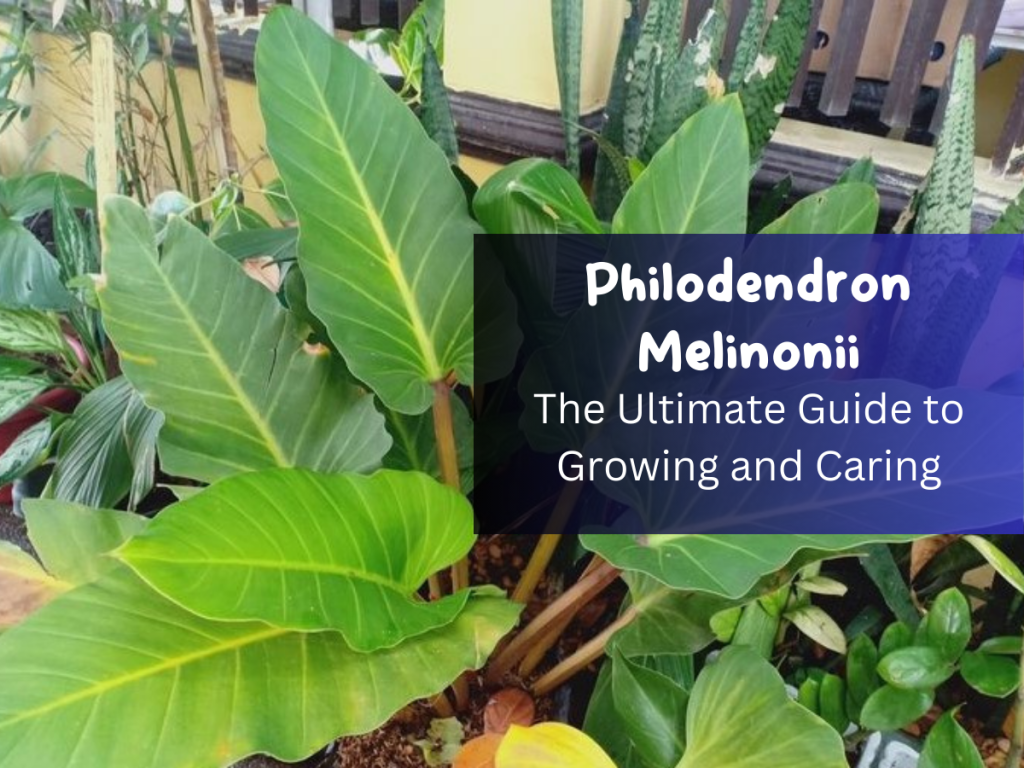Philodendron Melinonii, also known as the Black Gold Philodendron, is a stunning tropical plant with immense popularity among plant enthusiasts. With its glossy, dark green leaves and unique growth patterns, this plant adds a touch of elegance and beauty to any indoor space. This comprehensive guide will explore the characteristics, care requirements, propagation methods, and potential benefits of owning a Philodendron Melinonii.
Overview
Philodendron Melinonii is a member of the Araceae family and is native to the tropical rainforests of Central and South America. It is primarily found in Brazil, Colombia, and Ecuador. This plant is known for its heart-shaped leaves with a glossy, dark green coloration. The unique feature of Philodendron Melinonii is the emergence of bronze-colored new leaves, which eventually mature into the classic deep green hue.
Care Requirements
Light: This plant thrives in bright, indirect light. It can tolerate lower light conditions, but its growth may be slower. Avoid exposing it to direct sunlight, as this can cause leaf burn.
Temperature: This tropical plant prefers temperatures between 65°F and 85°F (18°C and 29°C). Please protect it from cold drafts and sudden temperature fluctuations.
Watering: Water your Philodendron Melinonii when the top inch of the soil feels dry. Ensure proper drainage to prevent root rot. Overwatering can harm the plant’s health, so striking a balance is essential.
Humidity: High humidity is crucial for Philodendron Melinonii. Mist the leaves regularly or use a humidifier to maintain humidity levels around 50-60%. Placing the plant on a pebble tray filled with water can also help increase humidity.
Soil: A well-draining potting mix that retains moisture without waterlogging is ideal for Philodendron Melinonii. A blend of peat moss, perlite, and orchid bark works well.
Fertilization: Feed your Philodendron Melinonii with a balanced liquid fertilizer monthly during the growing season (spring and summer). Follow the instructions on the fertilizer packaging for proper dosage.

Propagation
Philodendron Melinonii can be propagated through several methods:
Stem Cuttings: Place a stem cutting with at least two nodes in a moist growing medium. Keep the soil consistently moist until roots develop.
Air Layering:
- Choose a healthy stem and create a small wound by removing a section of the outer layer.
- Enclose the damage with moist sphagnum moss and wrap it with plastic wrap.
- Once roots form, separate the new plant from the parent.
Benefits of Philodendron Melinonii
Aesthetic Appeal: The glossy, dark green leaves of Philodendron Melinonii, combined with its unique growth patterns, make it a striking addition to any indoor space or tropical garden.
Air Purification: Like other philodendron varieties, Philodendron Melinonii helps improve indoor air quality by filtering out pollutants and releasing oxygen.
Stress Reduction: Indoor plants, like this plant, have been shown to reduce stress and improve mood, contributing to a healthier and more relaxing environment.
Conclusion
Philodendron Melinonii, with its dark green foliage and captivating growth patterns, is an exceptional plant that brings a touch of elegance and beauty to any space. You can ensure its healthy growth by providing the right care, including proper lighting, temperature, watering, and humidity. With its air-purifying qualities and stress-reducing benefits, owning a Philodendron Melinonii is visually pleasing and beneficial for your overall well-being. So, bring home this enchanting plant and experience the joy of nurturing a unique and beautiful tropical treasure. Read article about Pilea Glauca Mystifall and Cactus Corking in Avi Hoffman Garden.

faq
Philodendron Melinonii, like many other philodendron varieties, contains calcium oxalate crystals, which can be toxic to pets if ingested. These crystals can cause irritation and discomfort in the mouth, tongue, and gastrointestinal tract. It is advisable to keep this plant out of reach of curious pets or consider choosing pet-friendly alternatives if you have animals that may come into contact with it.
Philodendrons, including Philodendron Melinonii, prefer bright, indirect sunlight. They can tolerate some direct sunlight, particularly in the morning or evening when it is less intense. However, prolonged exposure to direct sunlight can lead to leaf burn and damage. It is best to place philodendrons in locations with bright, filtered light or provide them with some shade to ensure their optimal growth and health.
While philodendrons appreciate consistent moisture, they prefer to avoid being constantly waterlogged. Overwatering can lead to root rot and other issues. It is crucial to allow the top inch of the soil to dry out before watering again. Water your philodendron when the soil feels slightly dry to the touch. Watering frequency may vary depending on factors such as temperature, humidity, and the potting mix used. Always ensure proper drainage to prevent water from sitting in the pot, and adjust your watering schedule accordingly to maintain a balance between moisture and avoiding excessive water accumulation.







